25 years after the plant opened, an open house was held to celebrate the anniversary; as Dr. Liedtke said at the event, it was a stroke of luck for employees that Opel took over the former AWE automotive plant in Eisenach, Germany, and opened a new plant on 23 September 1992. Liedtke should know – he was CEO of Automobilwerk Eisenach (AWE) during the exciting period following the fall of the Berlin wall, and fought to maintain automotive production in Eisenach. Over 8,000 visitors attended the 25th anniversary of Opel Eisenach, wandering through the plant facilities. Meanwhile, the plant’s founding trio of Liedtke, former Chairman of the Opel Management Board Louis R. Hughes, and longtime works council president Harald Lieske discussed historic events at a historic location. The three were seated in the final assembly hall, just a few meters away from the spot where the first Opel Vectra made in Eisenach rolled off the assembly line on 5 October 1990, only two days after German reunification.
Management forbade Liedtke from negotiating with Opel, but he did it anyway
When then-German Chancellor Helmut Kohl pressed the start button, it was like a weight was lifted off of Hughes’ shoulders. The others felt that way, too. Things had gotten started, and from there on out the developments came one after the other. Prior to that, though, Hughes had to do a lot of work to persuade higher-ups at General Motors in Detroit. Hughes himself was convinced of the site’s potential when he drove over the border on 7 January 1990 for his first visit to the AWE in Eisenach. Along the way, he saw German flags mounted outside private homes and a welcome banner that the GDR border patrol had painted themselves. “The people wanted reunification; I was convinced of that, and deeply moved, too.” Once the engineer saw the “well-educated specialist staff” at the workshop, he knew that “this place was the only one of its kind in Europe.”
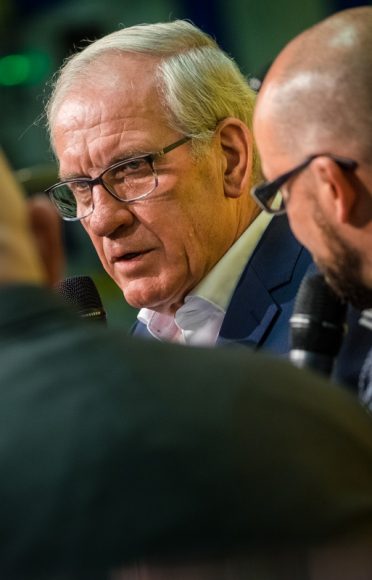
Dr. Wolfram Liedtke was CEO of Automobilwerk Eisenach (AWE) in the period following the fall of the Berlin wall. The GDR automotive conglomerate (IFA) had plans for the AWE that differed from Liedtke’s. However, since the IFA’s plans were long unclear, and the future of the Eisenach employees therefore hung in the balance, Opel was able to prevail with its concept for the plant. Liedtke succeeded in withdrawing from the conglomerate and allowing Eisenach to pursue its own path.
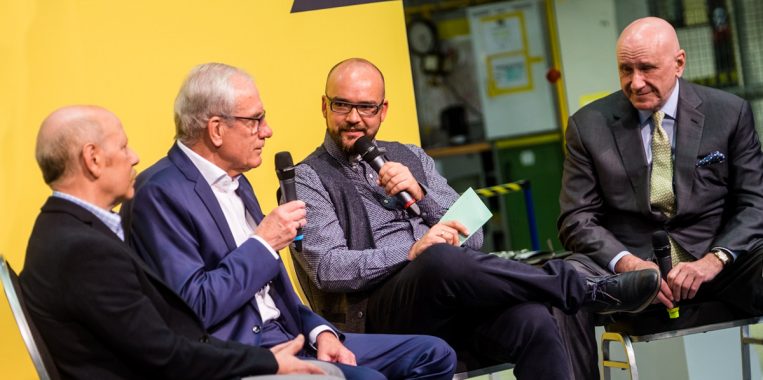
A historic spot The anniversary talk was held in the final assembly hall in the Eisenach plant. This is the spot where the first Opel Vectra assembled in Eisenach came off the assembly line on 5 October 1990, only two days after German reunification. The emotional, exciting discussion was moderated by Adi Rückewold from the Antenne Thüringen radio station (pictured second from right).
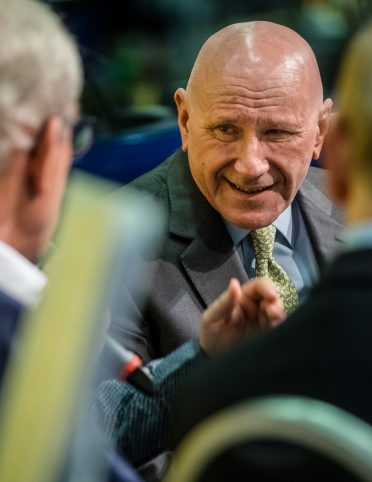
Louis R. Hughes was Chairman of the Adam Opel AG Management Board from 1989 to 1992. When the time came to hold a democratic vote on Opel engagement at a works council meeting in 1990, Hughes made the journey to attend and answered all employee questions. This was reflected in the vote’s outcome: The grand majority of the employees were in favor of Opel involvement.
A key moment for Liedtke, who was convinced “that the AWE plant would not be competitive on the free market,” occurred on 27 December 1990. On that day, his wife answered the phone at home in Eisenach. It was the deputy works council president of Adam Opel AG in Rüsselsheim, Germany, who asked whether Liedtke would be interested in speaking with Opel. Naturally, he was, and he returned the call on the following day. However, Opel was not the only party interested in the traditional plant, where the first Wartburg motorcar was built in 1899, and that later produced BMW sports cars as well as the Wartburg 353 (until 1991). BMW, which owned the plant until 1945, was not interested in taking it over, and did not assert re-transfer claims. Another automotive manufacturer that had cooperated with the AWE back in the days of the GDR was favored by the IFA (Industrieverband Fahrzeugbau; Industrial Association for Vehicle Construction) conglomerate, of which the AWE was a member.
Hughes persuaded higher-ups in Detroit and elsewhere.
For this reason, conglomerate management forbade Liedtke from negotiating with Opel. He did so anyway, and, despite the risk of the AWE shutting down, aimed to extricate the company from the conglomerate. After a long struggle, the former GDR Minister for Economic Affairs Christa Luft ultimately approved his request. The path to Opel had been cleared. From 1990 to 1992, 200 employees at the Opel AKE PKW GmbH facilities tested lean production based on Japanese production methods – which has now become the trademark of the Eisenach plant.
Everything was ready by 23 September 1992, when the new Opel plant in Eisenach opened and the first Opel Astra ‘made in Eisenach’ rolled off the assembly line.
Harald Lieske, who served on the works council in its early days, recalls: “Louis Hughes was able to get the employees excited. We saw a future for the AWE employees. That’s why we didn’t want to go on strike. Instead, we wore brightly colored shirts – which was forbidden – to draw attention to our cause.” This was a success; 31 companies were founded on the basis of the former AWE, thereby securing the majority of the AWE’s 9,500 jobs.
“We didn’t go on strike. Instead, we wore brightly colored shirts to draw attention to our cause.”
Now, after more than three million Opel vehicles have been produced in Eisenach, around 1,800 highly qualified employees work in the cutting-edge plant at the foot of the Wartburg castle to produce the Corsa and the ADAM. At the end of the anniversary ceremony, a visibly moved Liedtke accepted the medal of honor from the city of Eisenach ‘for special services and personal commitment to the benefit of the city of Eisenach’ on the behalf of both current and past employees. A corresponding entry was then made in the ‘golden book’ of the city.
Our three protagonists shook hands once again for the final photo op to commemorate their important work. Back in the day, they were at the right place at the right time and made the right decisions. They took good advantage of a stroke of luck: for Eisenach, for the people working there, for Opel, and for the future.
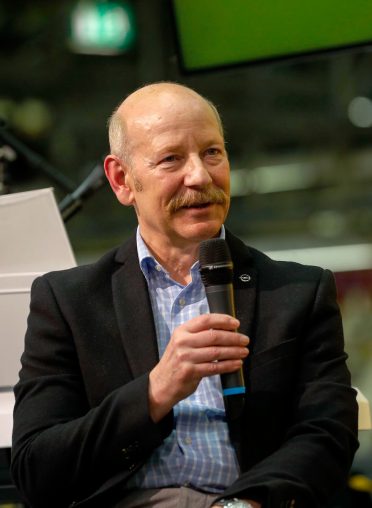
Harald Lieske was one of the first former AWE employees to start working at the Eisenach Opel plant in September 1990. He became the works council president in 1991, and in 1998 he became a member of the Adam Opel AG Supervisory Board. Lieske entered into partial retirement in June 2013.
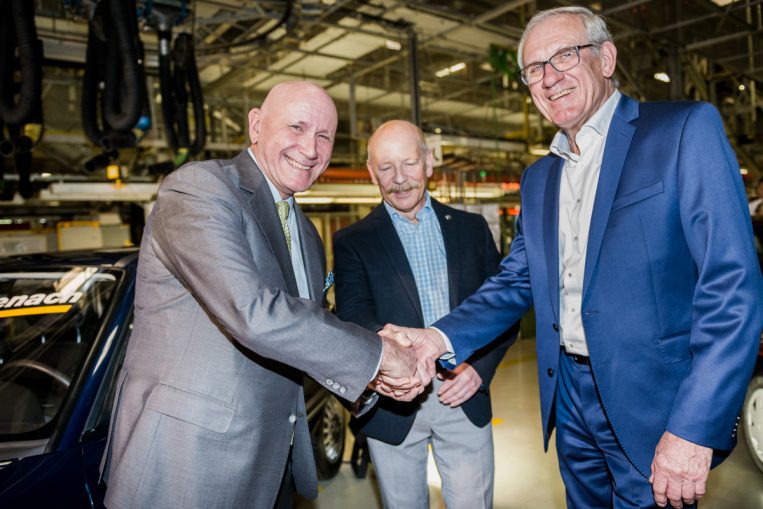
United Back in the day, they were at the right place at the right time and made the right decisions: Louis Hughes, Harald Lieske, and Dr. Wolfram Liedtke (from left).
October 2017